HIMACHAL PRADESH: Land of Himalayas
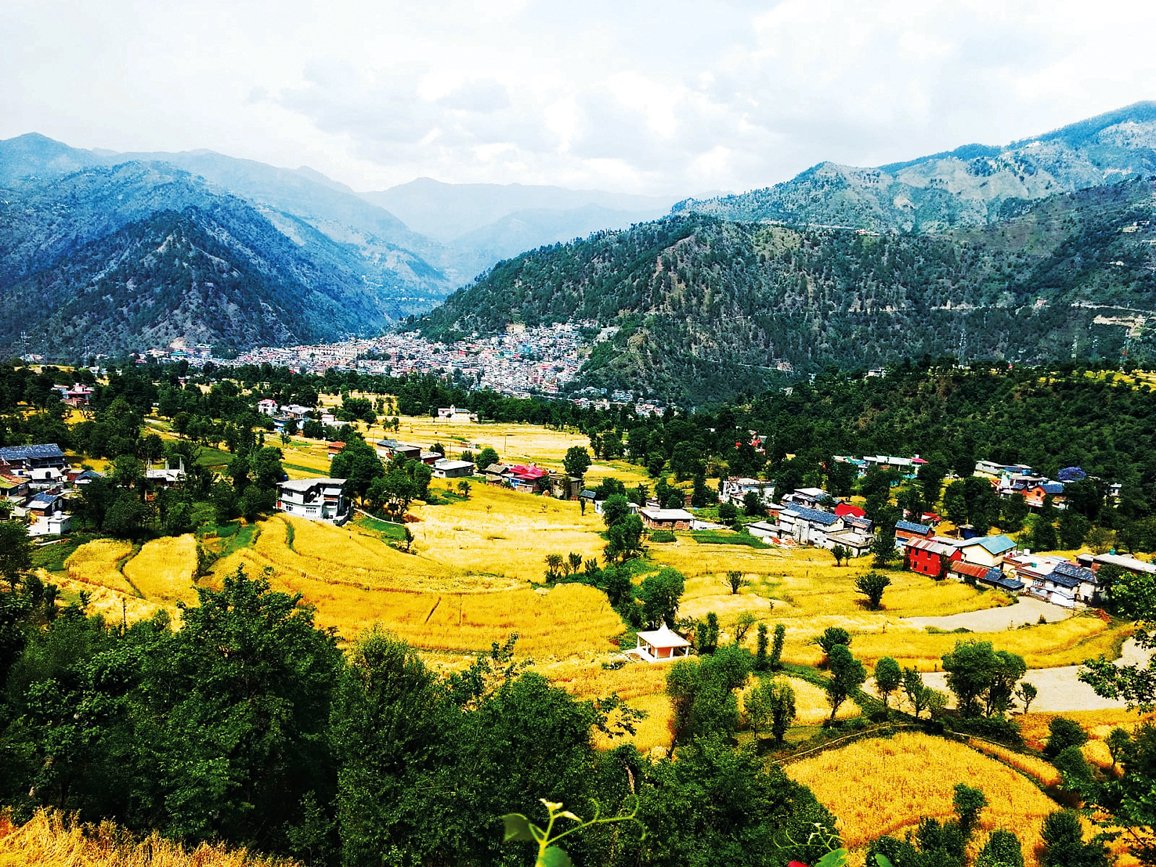
Deep, plunging valleys and looming mountain ranges that are breathtaking and heart-stopping all the same, Himachal Pradesh is a heavenly abode that none can forget once visited. Treacherous trekking routes and magical rivers along with quiet monasteries and relaxing resorts, there is so much to explore in Himachal Pradesh that you just can’t get enough of it. Whether it’s exploring quaint hill stations of attempting the impossible through paragliding. Lush valleys, snow-capped peaks, and deep gorges cut out by rives crashing down the mighty Himalayas, Himachal Pradesh is by far the country’s most popular and easily accessible hill state. A plethora of adventure activities, an abundance of scenic destinations and friendly locals are reasons enough for tourists to throng places like Shimla and Manali, which are among the best places to visit in Himachal, for a weekend break. But there are so much more to Himachal which are equally beautiful places.
Whether you’re planning a weekend getaway, or an extended holiday, Himachal Pradesh will not disappoint you. Don’t leave Himachal Pradesh before you take a roller coaster ride of all of it.
Kullu
Kullu, a popular tourist destination generally coupled with Manali, is an open valley with panoramic views and majestic hills covered with Deodar and Pine trees. Situated at an altitude of 1230 meters, Kullu is a nature lover’s paradise. Abundant with lush greenery, pristine river streams and a wonderful climate, Kullu is known as one of the most popular tourist spots in Himachal Pradesh. Kullu is also popular as a sister town to Manali which is on much higher altitude and provides more scenic views. Typically travellers cover both Kullu and Manali in one trip. Tourists coming to Kullu and Manali can indulge in a lot of adventure sports activities like river rafting, trekking, mountaineering etc. Set in the lap of nature, the picturesque landscape of this small town is mesmerizing. Kullu also has few important temples like the Raghunath Temple and Jagannathi Devi Temple. Apart from temples, the Pandoh Dam and Chandrakhani Pass are also must-visits in this region. Kullu is also used as the base town to reach Manikaran, Kasol, Malana, Bhunter and Rohtang Pass too.
Manali
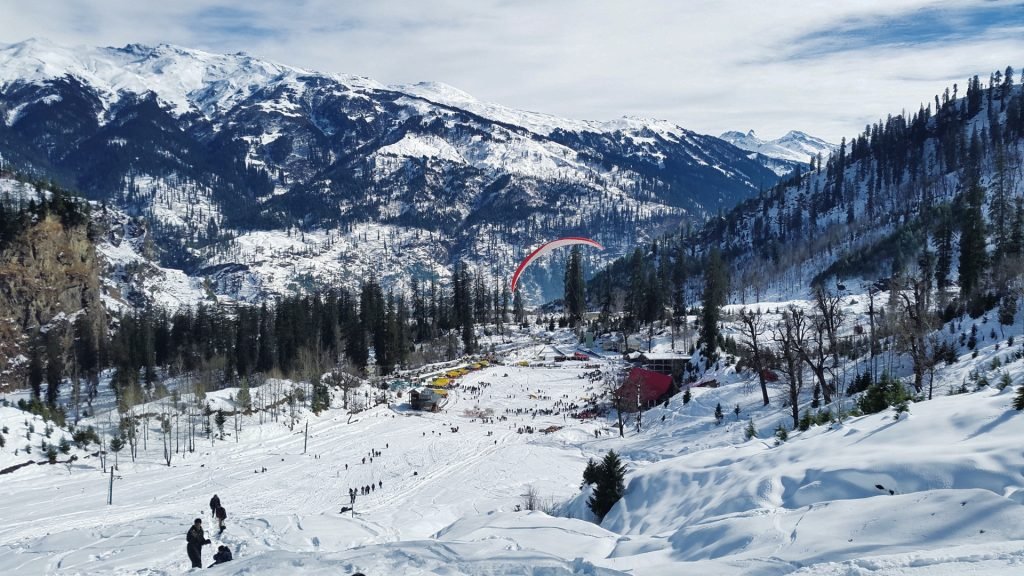
Nestled in between the snow-capped slopes of the Pir Panjal and the Dhauladhar ranges, Manali is one of the most popular hill stations in the country. With jaw-dropping views, lush green forests, sprawling meadows carpeted with flowers, gushing blue streams, a perpetual fairy-tale like mist lingering in the air, and a persistent fragrance of pines and freshness – Manali has been blessed with extraordinary scenic beauty. From museums to temples, from quaint little hippie villages to bustling upscale streets, river adventures to trekking trails, Manali has every reason to be the tourist magnet it is, all year round. Clean roads, swaying eucalyptus trees, endearing little eateries, small kitschy local market places, and cafes which serve delicious local food at unbelievable prices, Old Manali is a serene, tranquil place, whose lingering silence is broken only by the twittering of the birds and the sound of the roaring waters of the Kullu river. Solang Valley is the of the most visited places in Manali, with the drive up to Solang being as picturesque as the valley itself. Not only does Solang Valley offer some breathtaking views of the surrounding landscape, but its slopes are also a very popular skiing destination, especially during the winters. In summers, the place turns into a paragliding haven. If you’re an adventure enthusiast, Solang Valley has adrenaline-pumping activities such as zorbing and horse-riding available. With more than 25 lakh visitors every year, Rohtang Pass easily stands out as one of the most popular scenic spots to visit in Manali. Connecting the Lahaul and Kullu valleys, the Rohtang Pass is famous among nature lovers, photographers and adventure seekers alike. Mountain biking or skiing whilst surrounded by the awe-inspiring glaciers and snow-capped peaks on all sides is an exhilarating experience. Manali is also home to a tiny slice of history, in the form of the Naggar castle. Located among the breathtaking forests in Naggar town, the Naggar Castle is a stunning historical edifice. Once used as the residence of Raja Sidh Singh of Kullu, the castle is a fine blend of traditional Himalayan and European architecture. With majestic fireplaces, beautifully built staircases, and meticulous wood and stone works, the Naggar Castle is a must-visit when you’re in Manali.
Shimla
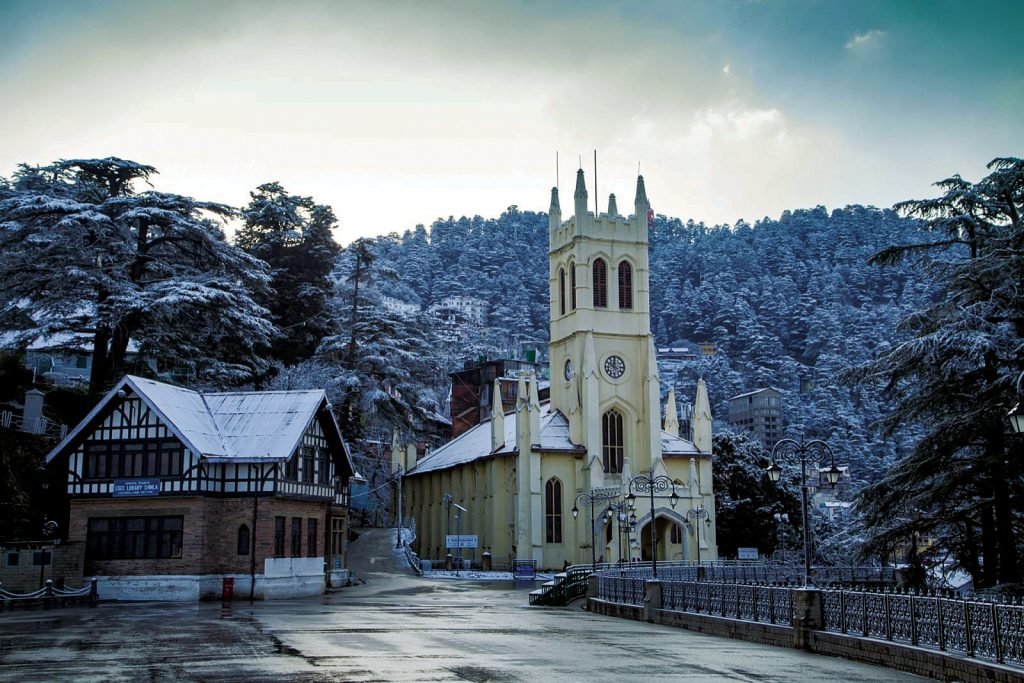
Situated at a height of 2200m, Shimla is the capital and the largest city of Himachal Pradesh in India. Set amidst beautiful hills and mystical woods, Shimla has been a very popular hill-station among Indian families and honeymooners since the last 50 years. British loved this city so much that they made Shimla their summer capital in 1864 and used to rule the sub-continent from here whenever the temperature rose in the nearby plains. Shimla still retains its old world charm with beautiful colonial architecture, pedestrian-friendly Mall Road and beautiful churches. The weather is pleasant for most of the months with tourists flocking especially during the summer months. The winters are cold with some days of snow from mid-December till February end. Tourists flock to the centrally located Mall Road and the Ridge, a walking only area which is lined up with multiple shops, cafes and restaurants. Shimla has been the host to some of the most important meetings in the Indian history, including the Simla Conference of 1945 and the Simla Agreement of 1972 between India and Pakistan. The Old Viceroy Hall now houses the Indian Institute of Advanced Study and is a popular tourist attraction. Shimla is often covered with nearby towns of Kufri, a hill-station almost always covered by snow and Chail, famous for a huge palace and the highest cricket ground in the world. Tourists also visit the famous Jakhu Temple and engage in sightseeing at various viewpoints during their trip. Shimla is well connected with many cities and is just 4 hours from the nearby city of Chandigarh. The city has an airport as well however there aren’t many daily flights from here. The railway station connects Shimla with the plans and is famous for the Kalka-Shimla train route, a UNESCO listed World Heritage site.
Chamba
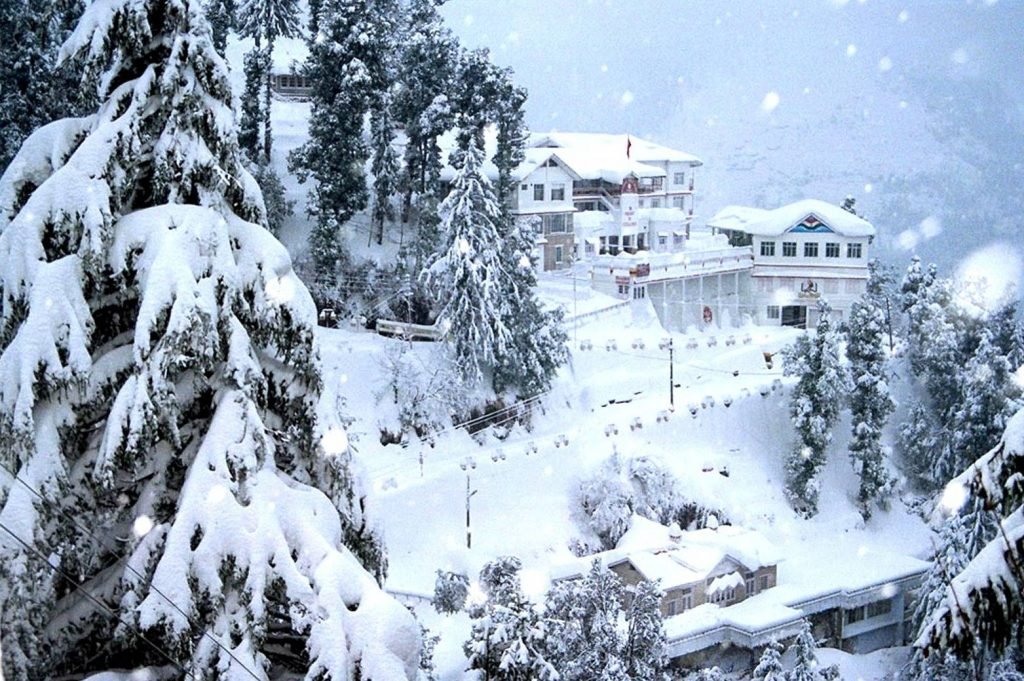
Chamba is a Himalayan town located in Chamba district of Himachal Pradesh. Known for the ancient temples, the caves, and the edifices that speak highly of Indian history, Chamba is famous for the gob-smacking views of the Pir Panjal, Zanskar and Dhauladhar ranges set in the backdrop of a picture-postcard town. This epitome of the Himalayan town is located at an elevation of 996 meters on the banks of river Ravi flanked by Jammu and Kashmir, Lahaul and Kangra. Chamba is popular for its traditional handicrafts and art along with the miniature Pahari paintings – a form of Indian painting that originated from the Himalayan hill kingdoms of North India during the 17th to 19th centuries. It is also the base camp for several treks in the great Himalayan ranges. This, along with the stunning beauty and tranquil environs beckons travellers looking for an offbeat location among the much-popular Himachali towns. Chamba celebrates two renowned festivals – Suhi Mata Mela, held during March/April for four days and Minjar Mela, celebrated on the 2nd Sunday of the Shravana month, or August. This town of centuries-old fortress and shrines has many folk songs dedicated to it!
Dalhousie
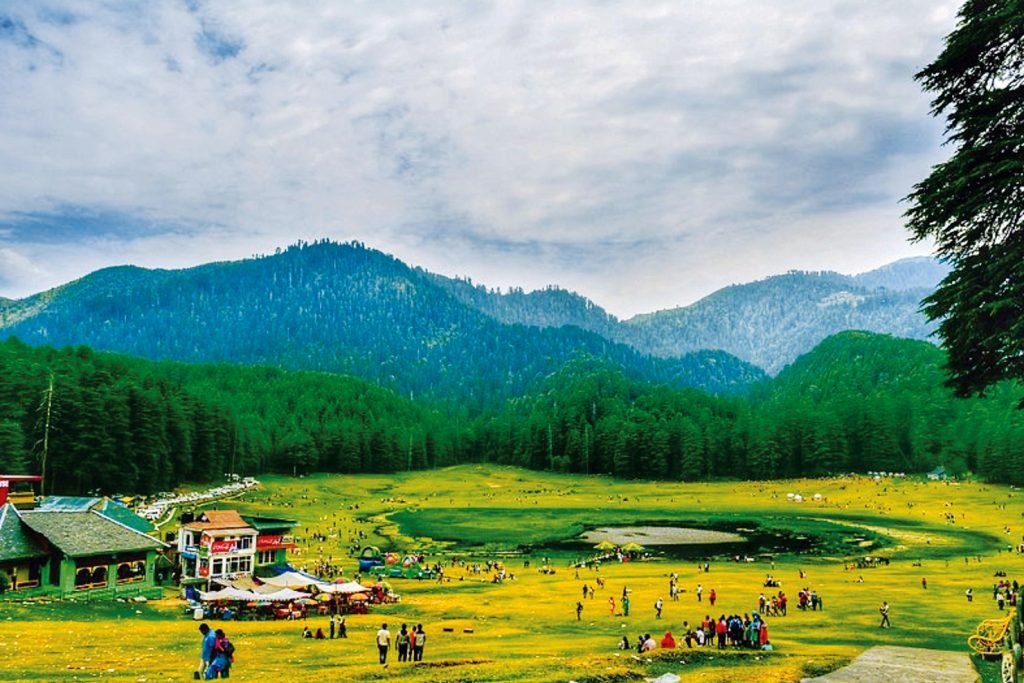
The tiny tinsel town of Dalhousie is a paradise tucked away in the lap of Himachal Pradesh. It boasts of old-world charm, mesmerising natural landscapes, pine-clad valleys, flower-bedecked meadows, fast-flowing rivers and magnificent misty mountains. This hill station was one of the favourite summer destinations of the Britishers during the Indian colonial era. The Scottish and Victorian architecture reminds you of its colonial heritage while the wispy air continues to hone British aromas. Situated far from the buzzing cities in the country, this quaint town transports you to a pollution-free environment in the lap of nature. Dalhousie has a number mountains and river streams that tourists must visit. Among them, the most famous are Panch Pulla, Satdhara Falls and the Daikund peak.
Kasauli
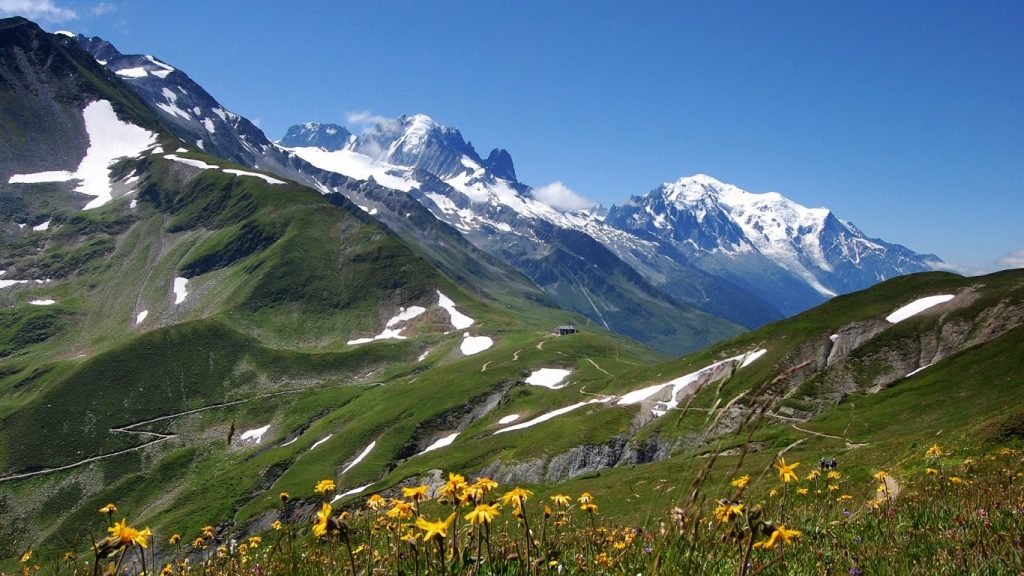
Located on the way from Chandigarh to Shimla, Kasauli is a hilly cantonment town which makes for an ideal peaceful holiday location, away from the rush. Kasauli is a small town in the south-west part of Himachal and is on the relatively lower edges of Himalayas. Nestled amidst beautiful woody forests of pine and cedar trees, Kasauli owes its mystical and serene ambience to the lavish Victorian buildings built by the Britishers who resided here years back. These structures speak volumes of the glorious past of this hill station. Mainly known for its accessibility from Chandigarh and Delhi (it located just 65 km away from Chandigarh), Kasauli is not about particular attractions or activities, but about the serene environment and beautiful properties to stay.
Mcleodganj
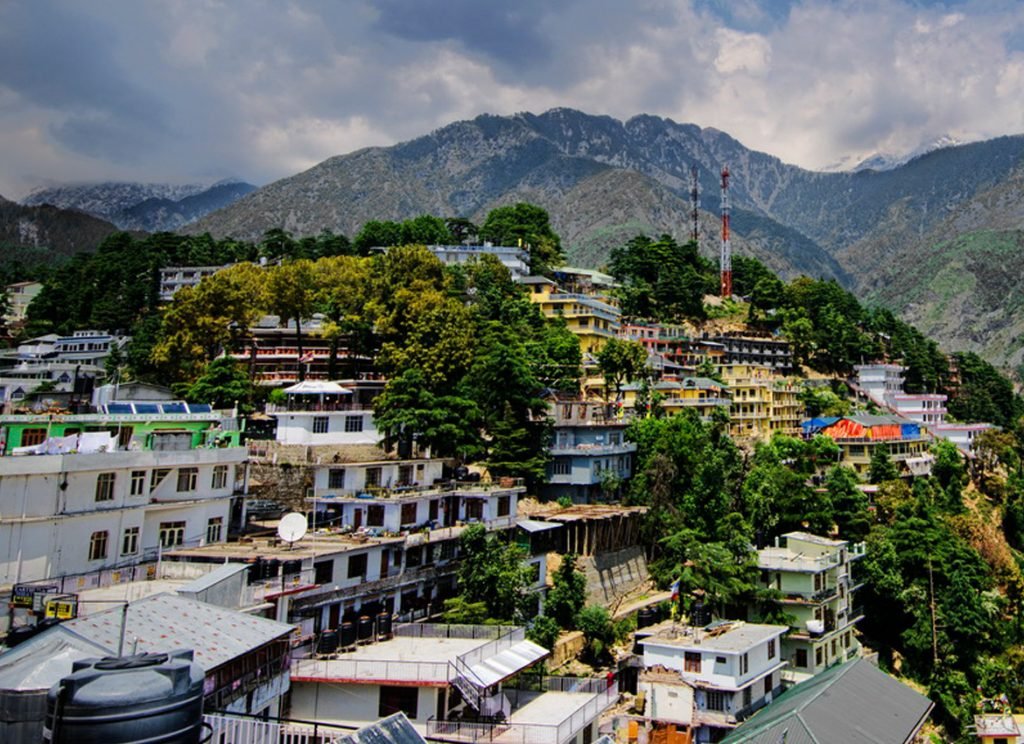
Mcleodganj is a hill station near Dharamshala, popular among trekkers. Its culture is a beautiful blend of Tibetan with some British influence. Also known as Little Lhasa and famous around the world for being home to the Tibetan spiritual leader Dalai Lama, Mcleod Ganj is a beautiful town situated near upper Dharamsala. Nestled amidst majestic hills and lush greenery, this town is culturally blessed by a prominent Tibetan influence owing to the major settlement of Tibetans here. Mcleodganj has one of the most mesmerising landscapes in the entire state of Himachal Pradesh and attracts a lot of tourists throughout the year. The towns of Dharamsala, Mcleodganj, Bhagsu Nag and Kangra are situated very close to each other and tourists must cover all these destinations while travelling here. Few of the most eminent and religiously significant monasteries in India are located here, including the Namgyal Monastery and Tsuglagkhang, where the spiritual leader Dalai Lama resides. Tourists must also visit the scenic Dal Lake and Triund, which are apt for quiet picnics.
Dharamshala
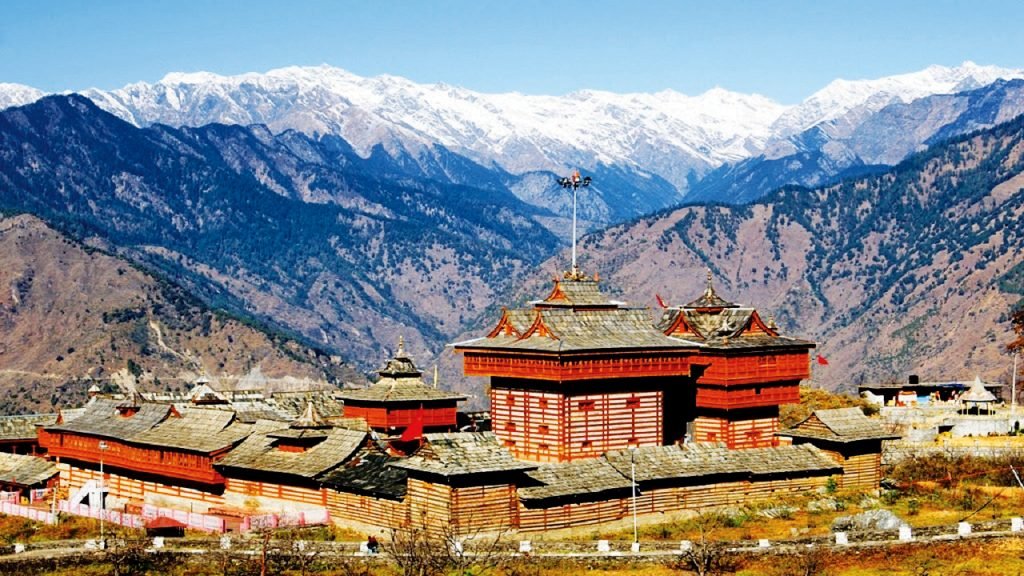
Dharamsala is located in Kangra district at a distance of 18km from Kangra City. Dharamsala is separated as upper and lower divisions with different altitudes. The lower division is the Dharamsala town itself. Whereas, the upper-division is located 3km away and popularly known as Mcleodganj (Famed as the holy residence of the Dalai Lama and Tibetans in exile). Dharamsala is prominently visited for the bus connections and the bustling market.
Kasol
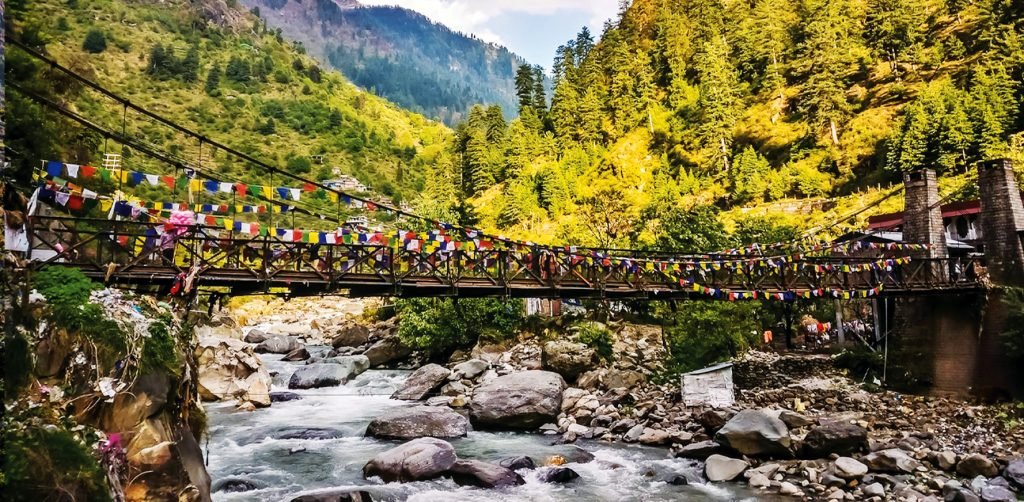
A small village in Himachal situated along the banks of the river Parvati, Kasol is a tourist attraction that is rapidly gaining fame as a very popular hub for trekkers, backpackers, and nature lovers. Commonly known as the Amsterdam of India, this quaint little village is resplendent in natural scenic beauty, and is one of the few places in the country that is yet to be ruined by urbanization and commercialization. Situated between the towns of Bhuntar and Manikaran, Kasol might seem like a plain, nondescript village from the outside, but it is one of the best places in the country to just sit back and chill in the lap of nature. With the waters of the Parvati river gurgling along and a stunning view of the snow-capped mountains in the background, taking a stroll along the river is one of the best ways to spend a day in Kasol. With smooth boulders and clean white sand separating the green grass from the frothing sea-green waters of the river, every single bend in the river opens up to a breathtaking panorama of cliffs, pine trees, and gushing waterfalls. Kasol is famous for its trekking trails, which include treks to Kheerganga, Yanker Pass, Sar Pass, and Pin Parbati Pass. To get a real feel of the culture in these regions, go on a visit to the village of Malana. Located a few kilometres away from Kasol, Malana is a tiny hamlet inhabited by people living in self-imposed isolation. The people of Malana claim themselves to be Aryan descendants, as a result of which they avoid interaction with outsiders. The village has plenty of scenic sights, though, and is often called ‘Little Greece’. Kasol is inhabited by a huge number of people from Israel, which is clearly discernible from the plenteously available Israeli food, and the street signposts inscribed in Hebrew. Kasol has quite a few streetside cafes which serve delicious food, and the experience of sitting and enjoying a meal amidst the dark green forests and the awe-inspiring mountains make the meal even more enjoyable. Kasol has a flea market that sells a variety of items, so you can pick up trinkets, souvenirs, pendants, and even semi-precious stones to take back home for family and friends.
Manikaran Sahib
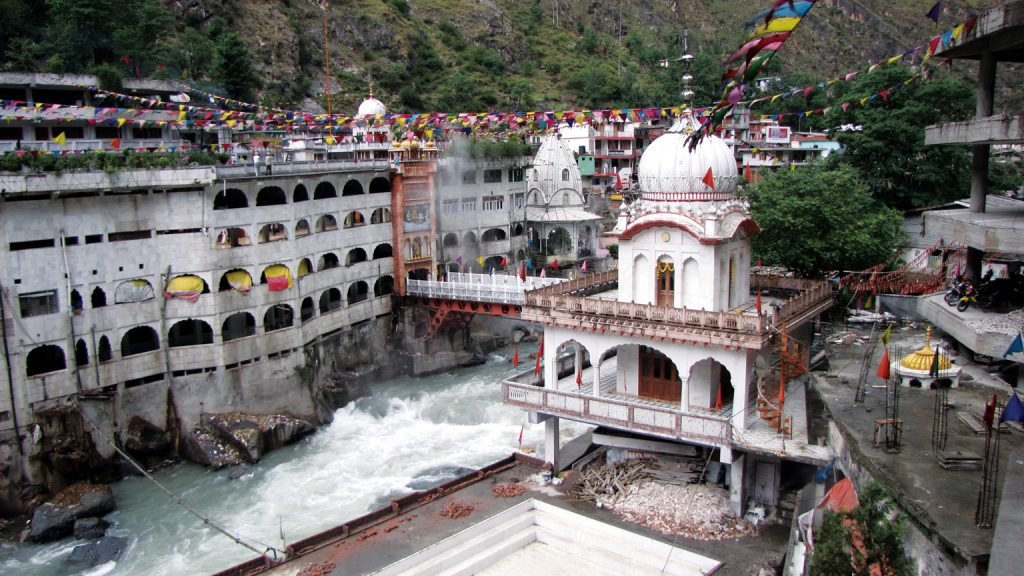
Located at a distance of 4km from Kasol in the Parvati Valley along the banks of river Parvati in the Kullu District of Himachal Pradesh, Manikaran is known as a famous pilgrimage destination for both Sikhs and Hindus. A good number of temples, Gurudwara Manikaran Sahib and hot springs forms the religious pattern of the place and attract several people. There are three hot springs where one can take a bath, one being inside the Gurudwara itself and the other two being privatised by the guesthouses. Different sections for men and women are made at the bathing place. The water in these springs contains sulphur which ais capable of curing diseases. The hot springs again have religious and spiritual beliefs connected to it. The water is hot enough to prepare food by directly placing the vessels and is served as langar.
Spiti Valley
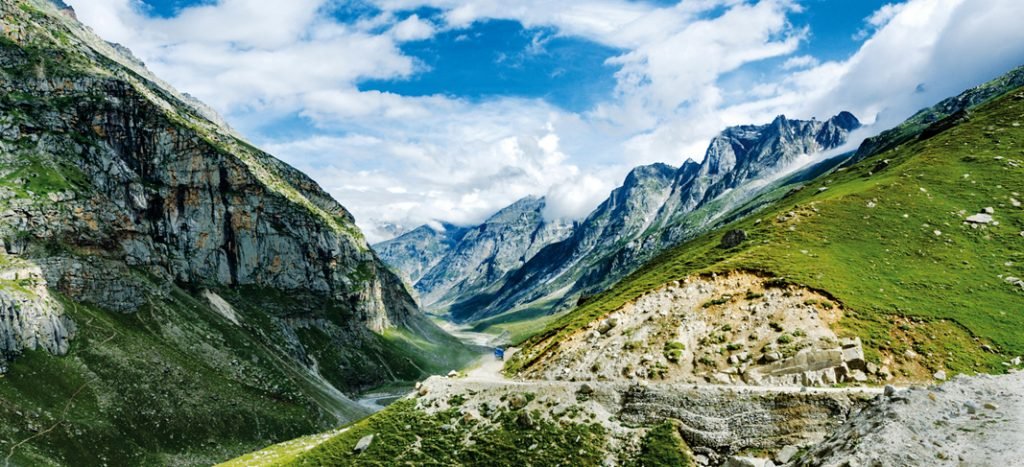
Long winding roads and valleys that present unforgettable glimpses of cold desert and snow-crowned mountains welcome you when you set foot into Spiti Valley. Bordered on all sides by the Himalayas, Spiti Valley, located in Himachal Pradesh, has an altitude of 12,500 feet above sea level, and gets just around 250 days of sunshine in the year, making it one of the coldest places in the country. With the thick Himalayan snow cutting Spiti off from the rest of the country for around 6 months a year, the summer months are the only time Spiti is directly accessible via motorway. The term Spiti means ‘The Middle Land’, as Spiti Valley separates India from Tibet. Scantily populated, Spiti is an adventure lover’s paradise, with a number of trekking trails that tourists can choose from. All of these treks start from Kaza (Spiti’s capital from where you make your base camp) to various peaks from where you can get panoramic views of the Himalayan Mountains. An easy 1.5-kilometre trek along the Spiti River from Dhankar Monastery to Dhankar Lake promises gorgeous views of the villages below. The Dhankar Lake itself is a place where you can sit back and relax amidst the cool mountain air. The mountain ropeway from Kibber to Chichum is also another popular tourist attraction that offers spectacular views of the gorge below, as well a bird’s eye view of the surrounding peaks.


